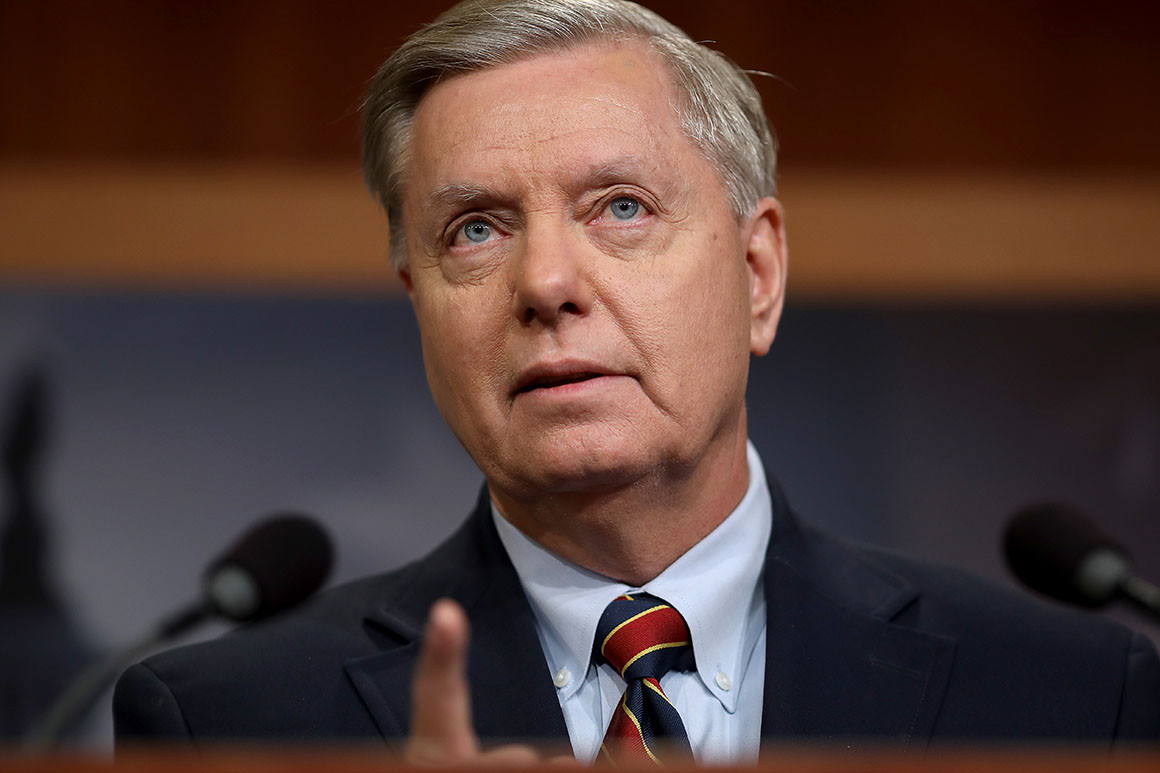Bill To Repeal Section 230 Introduced, Controversial FCC Order on Wi-Fi, Advice on Community Broadband
Senate Judiciary Committee Chairman Lindsey Graham on Tuesday introduced legislation to repeal Section 230 of the Communications Decency Act if Congress doesn’t figure out how to revamp the legal shield by January 1, 2023. Graham’s bill is the first real effort to translate President Donald Trump’s
Jericho Casper

Senate Judiciary Committee Chairman Lindsey Graham on Tuesday introduced legislation to repeal Section 230 of the Communications Decency Act if Congress doesn’t figure out how to revamp the legal shield by January 1, 2023. Graham’s bill is the first real effort to translate President Donald Trump’s call to fully revoke the law into legislative text.
Section 230, the 1996 law that grant’s legal protections to platforms for third party content posted on their sites, has recently faced increased scrutiny from both Democrats and Republicans, as social media giants are being forced to make decisions on how to moderate electoral and COVID-19 disinformation, posted to their websites.
“The time has come for these largely unregulated Big Tech giants to either be broken up, regulated, or subject to litigation for their actions,” said Graham. “It’s time we put the Section 230 protections these companies enjoy on the clock.”
Graham said two years is plenty enough time to find an alternative to the current protections for social media companies. Yet, a two-year window to revamp one of the internet’s most important laws could prove overly ambitious for a Congress that has been slow to advance legislation on an array of tech fronts.
Even some of Section 230’s biggest critics have balked at the prospect of a full repeal. House Speaker Nancy Pelosi said at a recent press conference “I don’t like Section 230. I think it needs to be revised, but you cannot repeal it.”
Legislators only began to have bipartisan discussions on Section 230 revisions during last Thursday’s Senate Judiciary Committee meeting, where Graham scrapped a committee vote on the EARN IT Act, a bill he introduced aimed at amending Section 230, after realizing it would not pass.
During Thursday’s meeting, committee members agreed revising Section 230 will be a lengthy process, of which, they are at the very beginning stages.
FCC Order with potential to harm TV-band Wi-Fi generates controversy
Rural broadband advocates are lining up with free-market groups against a recent action taken by the Federal Communications Commissions aimed at expanding the signal boundaries of TV stations.
Around the time the agenda was released for the Commission’s December open meeting, Chairman Ajit Pai placed on circulation a Report and Order on distributed transmission service rules. Critics say the action will adversely affect the availability of TV white space spectrum, an important tool to expanding broadband connectivity in underserved areas, and further, that the action bucks Democrats’ “pens down” directive to Pai on partisan or controversial items.
At least 19 organizations, including Connect Americans Now, and voices for agriculture, veterans, rural communities, technology, broadband connectivity and more, have written to the FCC to oppose the order and express concern it could undermine positive progress made on TV white space technology as a tool to help bridge the digital divide, by limiting the availability of TVWS spectrum.
The proposed changes would allow broadcasters to transmit beyond their existing service area without a clearly defined need for such an expansion and undermine the Commission’s recent progress to unleash the full potential of TVWS technology as a critical tool to help eliminate the broadband gap in areas of low population density and challenging topography, wrote CAN representatives, in a recent letter to the Commission.
Craig Settles offers advice to federal broadband grant applicants
A recent report, entitled Show Me the Money, authored by Craig Settles, the director of Communities United for Broadband, who has over 30 years of experience being a thought leader on broadband deployment business strategies, gives key advice to federal broadband grant applicants and details how contenders cam make their federal grant applications stand out.
“At some point, your proposal is going to sit in front of a tired, blurry-eyed federal employee who has more proposals with the same technology, similar engineering designs and the same goal as yours, but this person may only be able to fund one that day,” writes Settles.
To set an application apart, Settles recommends stressing the goal of the project, over simply attempting to “problem-solve.”
“Creation orientation draws more dollars than just problem-solving,” writes Settles. “Your goal creates excitement, a different way of thinking about the tasks at hand that leads to more effective broadband projects.”
For projects lacking a comprehensive goal, “broadband and telehealth is a winning combo,” according to Settles. Congress and federal agencies are ready to spend billions of dollars on telehealth and broadband. The universality of the need for telehealth, its dependency on broadband, plus the lack of telehealth and broadband in low-income, unserved urban and rural communities means grant proposals that address both technologies directly or indirectly should be seriously popular, he writes.
“All other things being equal, the ability of your opening sentence to grip the imagination and stir the heartbeat of the reader plays a big role in raising your proposal above all others,” writes Settles. “Your proposal can be the key that unlocks millions of dollars.”










Member discussion